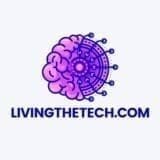CIO 3.0: The 4 Biggest Challenges Facing Today’s Digital Leaders
In this digital era, it is critical, not only for IT but for an organisation, that their CIO is at the forefront of digital innovation and disruption. The CIO 3.0 or Digital CIO must be able to role model and create a customer-centric mindset across IT where the customer is at the heart of everything the organisation does. The CIO and IT teams must be able to deliver and support business strategies in the face of some serious industry disruption and change.
The CIO should not just look to replicate what he/she did in other roles or concentrate on keeping the lights on, whereas that may have been a strategy in the past it certainly will not be good enough in this digital age. Customers are expecting a more personalised experience from organisations they interact with or buy services/products. In 2017, the approach of the CIO 3.0 to IT must be from the customer/user experience viewpoint, resolving and anticipating customer problems (through actionable data) not simply creating technology solutions looking for a problem.
What worked in a previous organisation/industry may not work for the current organisation or industry where strategy and solutions must be “personalised” to that organisation and its industry. This is where the new breed of CIOs must constantly remain relevant, as Gartner puts it “staying relevant remains the biggest challenge for CIOs in 2017”.
Gartner states that “staying relevant remains the biggest challenge for CIOs in 2017
CIOs as digital leaders and advocates
The CIO is in an ideal position within an organisation when it comes to leading transformation/change initiatives. They can role model desired behaviours, create a collaborative culture, positively challenge the status quo, influence/support business stakeholders and set a vision and strategy that clearly details the desired transformation outcomes. Ideally, the CIO 3.0 has broad experience across industries as well as in the enterprise and start-up communities, so he/she will have received the benefit of working in a fast-paced customer-centric environment (e.g. UX, Agile design thinking CI/CD or Lean) with the ability to apply these insights to an enterprise organisation.
It’s still about your people and customers
The CIO must ensure they have or aim to have a digitally aware team that is multi-skilled, comfortable with rapid change (and, in some cases, ambiguity) and has a willingness to collaborate (across teams and business units) towards achieving a shared vision.
Above all, they must always think of the customer with the aim of quickly delivering a positive and frictionless experience that is actively promoted. That said, happy customers and positive experiences can only occur when IT teams are happy and engaged, are empowered to make decisions and have the tools (both technology and training) to do their jobs. With this in mind, there are 4 key challenges for a CIO in 2017:
Attracting diverse talent
A great organisational culture, where people feel empowered, allows for innovation and creates time for personal development. Whatever the culture may be, it is super critical to attracting and retaining your people, whilst also providing a working environment that supports cross-team working and collaboration. CIOs must show true empathy and listen to their people and key stakeholders so they are able to understand business drivers as well as being able to identify the root cause of any problem, rather than going straight to a solution.
To enable your team to innovate, there must be a supportive culture in place where your people have the time and freedom to innovate, and where they’re trusted and given authority to create and implement innovative solutions. To encourage innovation, organisational leaders need to support innovation by removing inhibitors such as their day-to-day work. Another way to give your teams a chance to have their ideas heard could be in the form of a “Dragon’s Den,” where ideas are pitched every month to senior leaders for possible implementation. If their idea is selected, they could then have a set time and budget to turn that idea into a product or service.
The skills required to keep up with the rapid rate of change are also in high demand, such as security, UX/CX designers, data engineers, cloud and automation, as well as software developers. You need the culture and environment to attract and retain these skilled people; the CIO plays a key role in establishing the desired culture. If the CIO gets the culture spot on, existing teams will “sell” the benefits of working in a particular organisation and therefore attracting great talent should be easier.
According to the 2016 Gartner survey, 22% of CIOs say that having the relevant skill sets remains a barrier to success.
The rate of change
To keep up with the rapid rate of change/innovation, organisations must create dedicated innovation teams that can either be:
- A separate group that funds and delivers initiatives (outside of a business unit) and then passes it over to the correct business unit to manage as part of their BAU work.
- Or a separate innovation group that funds the initiative to be delivered in conjunction with the appropriate business unit to MVP (Minimal Viable Product), and it is then fully managed and funded within that business unit, totally outside of the innovation group.
In both instances, the CIO and IT teams must be able to rapidly respond to the needs of the innovation group and business units to enable rapid delivery of innovation through reusable architecture, processes and technology.
Managing stakeholders and building relationships
Critical to gaining support across the organisation is the ability of the CIO to build win-win relationships with key stakeholders and to get the organisation as a whole excited by their vision and strategy for the change. Articulating through inspiring stories and demonstrating the new digital world will also help your teams decide if they actually want to buy into the transformation.
As Gartner’s Ian Cox states, “There are a lot more people working in technology with a lot of other departments other than IT holding their own technology budgets.” Ian also believes that “the challenge for CIOs is how they influence the decisions being made outside of their own remits and how they can use their skill sets to make their own decisions to stay relevant in the industry.”
The organisation outside of IT will drive new work into IT, be it a new product or feature that IT must be able to deliver quickly, whilst also meeting timeframes. This requires IT and the business to work closely and collaboratively together to meet the desired outcome. This can be achieved using Agile methodologies, which may be a new concept for the IT team and its organisation. The CIO 3.0 must be able to guide the organisation through potentially new working practices/methodologies that enable the delivery of new products and features to market quickly.
Staying Current and relevant
It is vital that IT and the CIO stay up to date with industry and technology trends (e.g. Cloud or not? IoT, Digital, SaaS, AI) and can demonstrate or at least have a view on how these can be utilised by the organisation both now and in the future. Being relevant and current reduces an organisation’s need to look elsewhere for advice and technology solutions.
Part of remaining relevant is the ability of the CIO and IT teams to deliver on projects, service levels or advice in general, or risk losing the trust of the organisation and thus the ear of the executive team. If the CIO and IT teams cannot consistently and quickly deliver to the needs of the organisation, then you may see a proliferation of shadow IT within the company, again a possible sign that IT is not being agile or responsive enough to meet the needs of the organisation. Above all, get the basics right so IT can build on solid technology decisions and solutions that support the Organisation and its strategies (growth or otherwise).
CEOs: Is the CIO 3.0 the only option?
If the CIO focuses on the above 4 key areas, they and IT can remain relevant, customer-focused and a driver of change so that the organisation can achieve its goals and strategies alongside, rather than having to go around IT. Organisations will require the CIO and IT to guide them through periods of significant change and lead digital strategies, innovation and the customer journey.
The CIO 3.0 in 2017 is both a CIO and CDO – they are open and visible with the ability to model the new behaviours required. They are also a visionary leader with an ability to quickly gain organisational trust, giving them the mandate whilst allowing them to create, execute and embody the transformation vision and business strategy.

With the variety of generations now in the workforce, understanding how to motivate these people is essential – it could be as simple as celebrating success, getting to know them as individuals, and finding out what drives them. Knowing your teams and people will give the CIO 3.0 an insight into their motivations and how they like to be engaged, which will help ensure a successful transformation. A good leader with all the right characteristics is essential for this.
As Digital leaders: The CIO 3.0 is more important than ever
Lack of a clear strategy, leadership and the ability to balance the “old and new worlds” as well as being unable to attract and retain talent will seriously inhibit any organisation’s digital aspirations. The CIO 3.0 is critical in bringing those who are less digitally inclined along for the journey by being a visionary and storyteller who can navigate through what is bound to be periods of uncertainty and fluidity.
The CIO 3.0 may have to lead the business’s digital strategy, vision creation, and execution and give guidance, where they must empower and drive their teams to deliver on that strategy and vision rather than dictate. Positively challenging the status quo is also essential, as is navigating the internal politics of an organisation and helping re-align mindsets to the new digital way.
For an organisation, choosing the right CIO 3.0 may require looking further afield (e.g. such as leaders across the business or who are not necessarily current CIOs), where not all CIOs are equal or even technical. Long gone are the days of using the big vendors (such as IBM or SAP) to build your IT environments, we are seeing CIOs as a driver of change/innovation and brokers of services, where they reside over hybrid clouds, SaaS solutions, automation and Agile rules, and going open-source is no longer a dirty word.
The CIO 3.0 is a multi-faceted role and is vital in driving the organisation through challenges and periods of uncertainty. Hire the wrong person as a CIO 3.0 and it will be to the detriment of an organisation, its people and its customers.
Is your IT leadership strategy ready for CIO 3.0? Get insights that help you lead with confidence—check out our other essential CIO reading.

